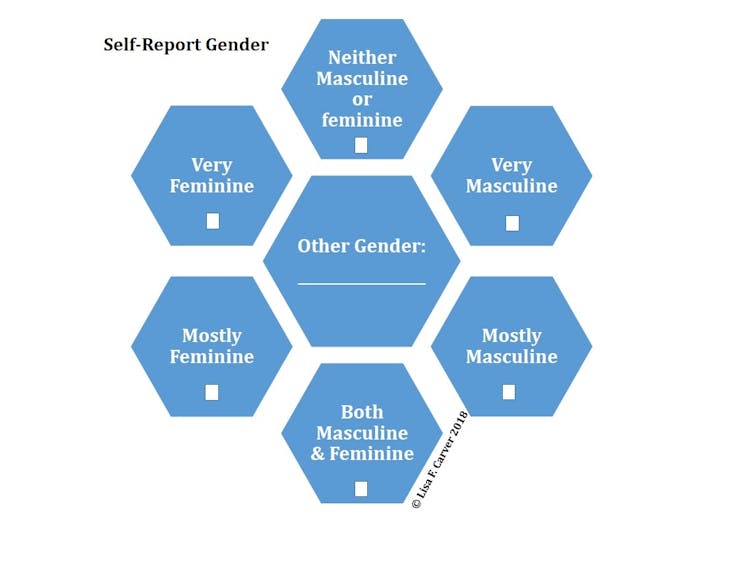Breaking sex talk taboo in Indian culture
n a nation where sex temples in Khajuraho or Shivling are worshipped, talking about sex in open is still considered a taboo in Indian society. With India having the largest adolescent population in the world, along with a thriving market for contraceptives, the country cannot afford to stay silent about its sexual health anymore, writes: SUBHANGI SINGH
When it comes to sex talk or sex education in India, the government brazenly ignores it, schools disregard it and the adults firmly push it under the carpet. The demographic diversity, in terms of age, sex, marital status, class, religion and cultural context, add the final nail in the coffin. What is absurd that in India where Khajuraho, known as the land of sex temples, is open for the world to worship, visit or make movies inspired from its sex sculptures,discussion on the subject sex, on the other hand, is sidelined considering morally disgraceful in the same society.
Jyoti (name changed) is an 18-year-old newly married girl from Agra. Jyoti shares the same predicament as most young married Indian girls in semi-urban areas. She narrated, “I don’t want to have kids right away. I have heard about contraceptives like Nirodh and Mala-D. But, I dare not bring it up with my husband. He might think I am too forward or that I have a promiscuous past. My mother will also be very pissed if she gets a whiff. Also, I must get pregnant within a year or people might think I am baanjh (infertile).” Such stories echo throughout north India. It is a built-up on multiple social phenomena, almost unique to South Asia and entrenched through its social institutions.
In a country where half the pregnancies are unplanned, a third of which are terminated by choice, the need for unmet contraception is huge. Government-run programs are often cosmetic in nature, only concerned with achieving their targets. In 2012, after a botched up female sterilisation camp in Bihar, resulting in complications experienced by several patients, activist Devika Biswas filed a petition in the Supreme Court of India. The Court finally ruled that such incidents violated components of Article 21 of the Constitution, i.e. the right to health and reproductive rights. The Court also ordered the discontinuation of such sterilisation camps, ensuring that no such fixed targets exist. Adult Indian women, let alone adolescents are mostly unaware about their sexual and reproductive rights.
Dr. Shefali Wadhwani Sharma, a gynaecologist at GMCH, Chandigarh reveals, “We often get girls in critical condition, who come in with a perforated uterus due to mishandled D&C abortions, done by unqualified caregivers like midwives, etc. Such is the social stigma that adolescent girls admitted with ruptured ectopic pregnancies refuse to admit that they have been sexually active. Young girls seldom get intimate checkups done until faced with acute medical emergencies. To avoid such cases, it is imperative that education about menstrual hygiene and sexual health becomes a part of school curriculum. Sexual health is a vital part of holistic healthcare and healthy women a keystone of women empowerment.”
The latest National Family Health Survey (NFHS), 2015-16, bears some good news. Use of contraception in single women has gone up from 2 per cent to 12 per cent in the last decade. Female sterilisation (36 per cent) is still the most popular form of modern contraception used, permanent or otherwise. However, women, especially adolescents, still lack sufficient knowledge about the dangers of unsafe sex and intimate infections. Religious and cultural obligations often dissuade them from practicing proper sexual/menstrual hygiene and/or using contraception. Most women still use ‘traditional’ contraceptive methods like monitoring menstrual cycles and ‘pulling out’, unaware that these methods are not only unreliable tools of family planning but also leave them vulnerable to Sexually Transmitted Infections (STIs) and Reproductive Tract Infections (RTIs).
Even in urban setups, girls admitting to sexual needs are slut-shamed. Trisha (name changed) is a 26-year-old single, financially independent woman who resides in New Delhi. “Once I dropped my bag at my workplace, spilling out a condom amongst other things. After that, the double entendres and indecent proposals continued for a month. I finally changed the job after a few months due to various reasons, this incident being one of them.” said Trisha. She continued, “When I visited a gynaec at a private clinic to get checked for late periods, I was welcomed with questions about my sex life, marital status and warnings about my biological clock ticking away. She also wanted to know if my parents knew! She ignored me when I tried giving background of my general health.” Such moral policing from healthcare providers, misconceptions and lack of trust about regular contraception methods, have led to rampant impetuous use of over the counter emergency contraceptives.
Government and private NGOs are now resorting to innovation to get the message across. Comedian Abish Mathew recently released a funny animated short film about the importance of maintaining good sexual health. Agents of Ishq, a multimedia project about ‘sex, love and desire’, is sprinkled liberally with humour to make it appealing for this generation. Population Foundation of India (PFI) is an NGO which has partnered with Doordarshan to spread awareness about sexual health, contraception and other taboo subjects, through a soap opera titled Mai Kuchh Bhi Kar Sakti Hoon..
Inclusion of Men
Although government programs and even NGOs that focus on youth reproductive and sexual health often limit their focus to females alone, men/boys play key roles as fathers, brothers, and partners. Often the male members of the family are key decision makers of the household in the largely patriarchal Indian society, necessitating participation of the male population in these programs. The patriarchal narrative also restricts men/boys from addressing their own reproductive and sexual health issues, the admission of which can render them weak in a society that teaches them to be macho. Information, education and communication about male sterilisation are inadequate, not only in society but the public health system as well. In the absence of a credible source of information and lack of inclusion in public awareness initiatives, men often ignore their sexual health issues which in turn can lead to mental trauma, male fertility issues and infections.
During the decade (2006-2016) between successive NFHS surveys, condom use declined by 52 per cent while the number of vasectomies conducted fell by 73 per cent, indicating a greater reluctance amongst men to use birth control. Only 5 per cent Indian males use condoms and male sterilisation forms a dismal 0.3 per cent of modern contraception used. Most Indian men consider vasectomy as an equivalent to castration. Majority of them are unaware about the ease of the procedure and the reversible nature of it. India is one of the few countries in the world where female tubal ligation is more popular form of permanent contraception than vasectomies, despite the fact that the ligation procedure is more complicated and requires greater post-operative care. The pitiful picture is worsened by the fact that men are taught from an early age that reproduction and subsequently, fertility, contraception and maternal healthcare are a ‘woman’s affair’.
As Dr. Sumeet Devgan, a consultant urologist at the Grecian Hospital, Mohali points out, “Young Indian men lack the open peer discussions prevalent in women and are reluctant to seek professional medical help for their sexual health needs. We often get cases with mismanaged self-medication for STIs, etc. We need to stop referring to sexual and reproductive health and rights as women’s issues; they are men’s issues as much. Given that use of contraceptives in India is riddled with social barriers, a systematic institutional approach with inclusion of men is required to result in better uptake of contraceptives and safe sex. On-ground work to engage men in taking shared responsibility, while still promoting women’s rights, is vital for sustained behavioural change.”
Half-hearted solutions
To spread sexual health awareness and establish dialogue between sexes, we need comprehensive sexuality education (CSE) at school level. CSE teaches the young about affirmative sexuality, informed consent, safe sex, etc. A similar program called Adolescent Education Program (AEP) was introduced by the government in India in 2007. But after several protests and moral policing, citing ‘inappropriate content’, the program was banned in several states. It was rolled out in select government/private schools with limited implementation. Though it covers issues like body image, gender and sexuality, violence and abuse, STIs, etc, it leaves out issues of negotiation and consent in intimate relationships. Even urban educational institutions are reluctant to include these programs to avoid ‘unnecessary sexualization’ of kids, according to an owner of a reputed private school.
The government also has a National Adolescent Reproduction and Sexual Health (ARSH) strategy, released in 2006 and various states have implemented their own versions of it; e.g. Himachal Pradesh has set up Yuva Paramarsh Kendras (YPKs) which work with health institutions, schools/colleges, youth festivals, etc. In 2008, the National Population Stabilization Fund (Jansankhya Sthirta Kosh) started a helpline (Ph: 1800-11-6555) to provide confidential counselling services regarding sexual and reproductive health problems. Rashtriya Kishor Swasthya Karyakram launched in collaboration with United Nations Population Fund (UNFPA) is a health program for adolescents in the age group of 10-19 years, to provide preventive, curative and counselling services with routine check-ups at primary, secondary and tertiary levels. Last year, the government also started an online distribution service of condoms which met with a good response. Several NGOs like PFI, Mamta and Haiyya are working extensively to raise awareness and remove the stigma attached to discussing sexual health and needs. But a large chunk of our population is unaware of the existence of such programs.
Technology has also helped bring these issues out of the closet by providing anonymity and peer participation. Online portals like Menstrupedia and ‘She and You’ provide a safe and anonymous environment to discuss taboo subjects like menstrual hygiene, STIs, contraception methods, etc. ‘She and You’ has started an initiative #JustSayIt, through which they want to break the awkwardness by hosting a series of events and making women open up about the very things they shy away from like sex, menstruation and their intimate health. The start of such programs is a welcome change. Sadly, it is restricted to small pockets in India with limited public awareness. The recent government restrictions on advertising for condoms and emergency contraceptive pills don’t help. The lack of proper implementation, poor quality of resources and inadequate training and sensitisation by the government has led to policy failure. According to a 2013 UNPF review, delaying childbearing could reduce India’s projected 2050 population of 1.7 billion by 25.1 per cent. With an ever burgeoning young population, India cannot afford to stay silent about its sexual health anymore.
http://www.tehelka.com/breaking-sex-talk-taboo-in-indian-culture/











